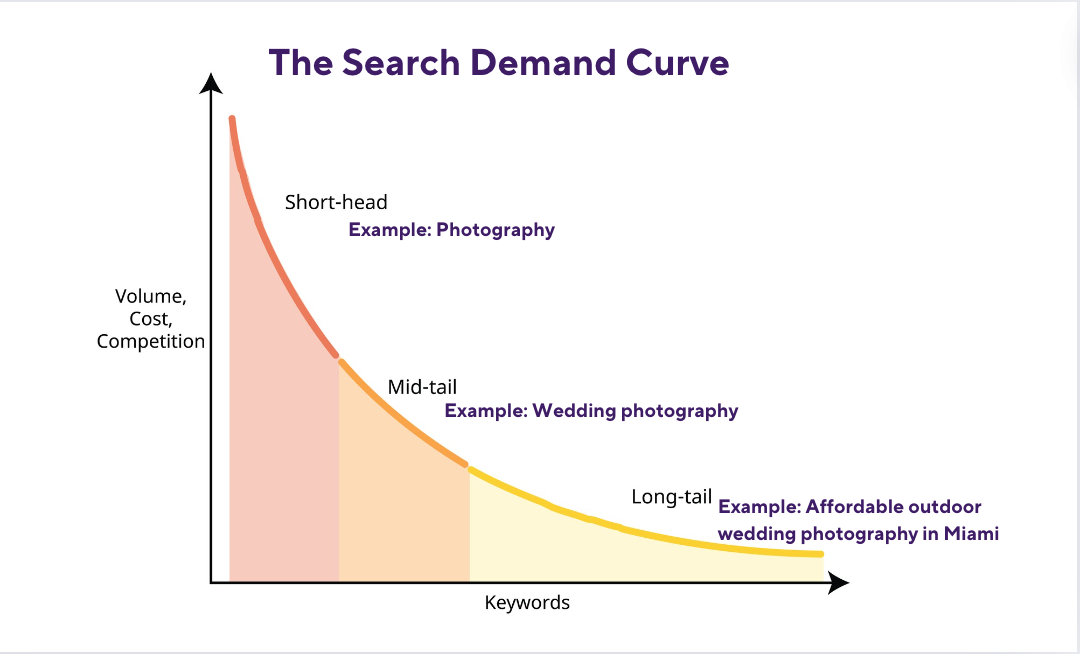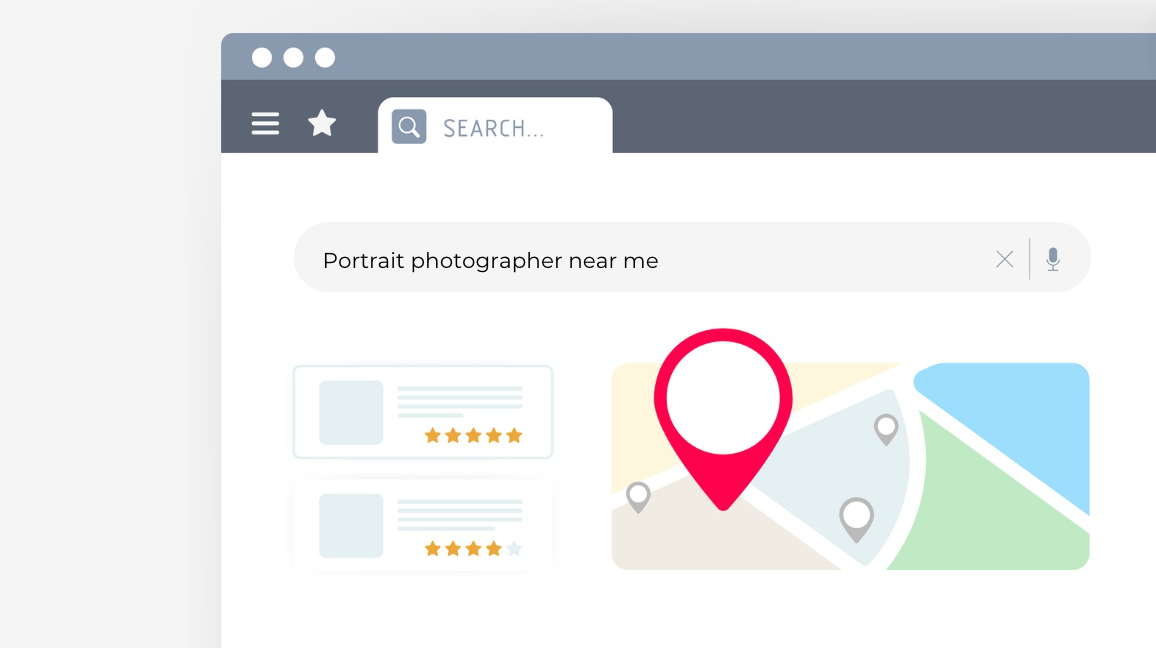Practical SEO Guide for Photographers

Search Engine Optimisation (SEO) might initially appear secondary for photographers, who often rely heavily on visual appeal and word-of-mouth to grow their business. However, in a digital world where countless photographers are competing for attention, SEO has become an indispensable tool for standing out. The online visibility of a photography business can significantly impact its ability to attract new clients and establish a strong brand presence.
Why Should Photographers Learn SEO?
In today's competitive photography market, potential clients frequently start their search for photography services online. Without a strong SEO strategy, your work might never reach its intended audience, no matter how impressive. This makes SEO not just a technical necessity, but a critical marketing strategy to ensure that when someone searches for photography services, your business appears prominently in search engine results.
Additionally, SEO helps photographers to be found precisely by those searching for their niche—whether that be wedding photography, portrait photography, or event coverage in a particular location. By using targeted keywords, and optimising your content, you can effectively guide potential clients right to your doorstep.
As competition intensifies, the need to differentiate yourself from the competition becomes even more crucial. SEO provides the tools not only to compete but also to stand out by keeping your business visible, accessible, and appealing to potential clients as they navigate through countless options online.
Understanding SEO: The Basics in a Nutshell
Before we dive into lesser-known techniques that can give you an edge, let's ensure we're clear on the basics. SEO in essence involves optimising your website so it ranks higher in search engine results for keywords related to your services.
Build on Context
It’s well-known that content is crucial for SEO, but for photographers, the context of this content can be a game-changer. Search engines are increasingly adept at understanding the context surrounding content. This means that simply posting beautiful images isn’t enough. You need to accompany these images with rich, relevant text. For instance, describing the techniques behind a shot or the story of a photography session can keep users spending more time reading your website and signal to search engines that your site is a credible source of information on the subject.
Topical authority refers to your website’s reputation as a go-to resource for a particular subject. For photographers, building topical authority is all about demonstrating deep knowledge in your areas of specialisation through comprehensive and insightful content, including client testimonials, blog posts about photography tips, and case studies of your shoots.
Once you have a plan of attack to tackle your authoritative content, it's time to ensure it reaches the right audience. Here are some must-have strategies to help you achieve this:
Keyword Optimisation
Identify keywords that potential clients might use to find services like yours. Tools such as Google Keyword Planner can help you discover relevant keywords, such as "best wedding photographer near me."
But to even start your search, you first need to determine which keywords are most relevant to your photography business. These keywords should reflect the services you offer, your style, and where you are based. Here are some keywords photographers can use for effective SEO:
- Service-based keywords: These include the types of photography you specialise in, like "wedding photography," "portrait photography," or "event photography."
- Location-based keywords: If you target local clients, include your city, region, or neighbourhood in your keywords, such as "New York City wedding photographer" or "fashion photographer in Paris."
- Niche-specific keywords: Depending on your niche, you might use more specific terms, like "underwater photography," "drone wedding photography," or "film photography."
Once you’ve identified your target keywords, the next step is to incorporate them into your website. Here’s how to do it effectively:
- About Me Page: Use broader keywords that summarise your overall business, such as "professional photographer in [city]" or "[niche] photography services".
- Service Pages: Each type of photography you offer should have its dedicated page optimised for specific service-based keywords you'll find.
- Blog Posts: Use your blog to target long-tail keywords, which are longer and more specific phrases. For example, "Tips for choosing a wedding photographer" or "10 pose ideas for couples".
- Image Alt Text: Since photography websites are inherently visual, optimising your image alt text with relevant keywords is crucial. It helps search engines understand and index your images and also improves accessibility.
Example in Action
Imagine you’re a wedding photographer in London. Your primary keyword might be "London wedding photographer," but you could also target "engagement photography in London," "luxury wedding photography London," and "best wedding photographer near me". Each of these keywords could be optimised across different pages and blog posts to capture various aspects of potential client searches.

Beyond the Basics: Advanced SEO Techniques
If you're already familiar with the strategies above and looking to explore more intricate and effective techniques to enhance your website's visibility and ranking in search engines—we have just what you need.
Visual Search Optimisation
In the world of photography, visuals are everything! Visual search optimisation involves making your images more discoverable and appealing to visual search engines. Google and other search engines have evolved to recognise image quality and relevance to interpret and understand images based on their content, context, and other visual signals to serve them up in relevant search results. The goal is to ensure that when someone searches for an image similar to yours, your content appears prominently.
Where to Start:
- High-quality images are non-negotiable. High-resolution, clear images are more likely to be indexed and favoured by visual search algorithms. Ensure your images are the best possible representation of your work, with good lighting and composition.
- Just like traditional SEO, the filenames and alt text of your images play a crucial role. Yes, even the filenames! Use descriptive, keyword-rich filenames and alt attributes that accurately describe the image content. This helps search engines understand and categorise your images more effectively.
Interlinking
Interlinking refers to the practice of linking from one page on your website to another page within the same website. Interlinking helps search engines crawl your site more effectively, ensuring more pages are indexed. Plus, it keeps your readers engaged longer but also makes your website easier and more intuitive to navigate.
By providing relevant links to other pages on your site, you encourage visitors to explore further rather than leaving after viewing just one page. This can increase the total number of page views per visit and reduce your overall bounce rate.
Avoid using common generic phrases like "click here" or "read more" which do not contribute to SEO and can confuse both users and search engines about the relevance and value of the linked page. Instead, use phrases that accurately describe the page’s content, like "meta advertising for photographers". See what we did there?
SEO-Friendly Formats
The format of your content can significantly impact its readability and how well it performs in search engines. Use headers, bullet points, and images strategically to make your content easier to read and scan. By doing that, your content becomes easier to read and navigate both for your audience and search engines.
Blog posts are a staple of SEO-friendly content. If blogging is your thing, always optimise your blog posts by:
- Including targeted keywords naturally throughout the text.
- Using headings (H1, H2, H3) to structure content effectively.
- Incorporating internal links to other relevant content on your site.
- Adding alt text to images, which should also be optimised for speed and responsiveness.
Your image galleries should be more than just aesthetically pleasing:
- Optimise image file names and alt text with relevant keywords.
- Ensure images are compressed for fast loading without sacrificing quality.
- Use structured data to mark up galleries, helping search engines understand the content and context of the images.
Social Sharing
Don't be shy, spread the word! Social media is a powerful tool for increasing the visibility of your content. By sharing your content, you can encourage your followers to visit your site to view more, which increases your overall web traffic. Higher traffic rates are a positive signal to search engines and can indirectly improve your SEO by showing that your site is valuable to a broader audience.
While social shares themselves don’t count as links for SEO purposes, increased visibility can lead to more engagement or backlink opportunities. For example, a blogger might discover your photography on social media and decide to feature your work in a blog post with a link back to your site. Here are some strategies for effective social sharing:
- Tailor your content to suit the format and audience of each platform. Instagram is ideal for high-quality images and stories, while Facebook is great for longer posts, albums, and events.
- When you share content, use a call-to-action.
- Use relevant hashtags to increase the discoverability of your posts.
- Consistency is key to keeping your audience engaged!
- Make it easy for visitors to share your content by including social sharing buttons on your website and blog posts. You can also encourage sharing by running social media contests or offering incentives for shares.
Local SEO
Since most clients are searching for professionals in their vicinity, local SEO (appearing prominently in local search results) is crucial. This visibility can significantly increase your chances of capturing business from those looking to hire a photographer near them.
Key Strategies to Improve Your Local SEO as a Photographer
- Google My Business (GMB): Set up and regularly update your Google My Business profile. This is critical for local SEO as it affects how your business appears in Google Maps and local search results. Keep your profile complete and accurate, including your business name, address, phone number, and hours of operation. Regularly post updates and photos to your GMB profile to keep it active and engaging.
- Online Directories: Make sure your business information (name, address, phone number) is consistent across all online directories and platforms. Inconsistencies can negatively impact your search ranking.
- Local Keywords and Content: Incorporate local keywords into your website content, meta descriptions, and titles. Incorporate local keywords into your website’s content, especially in key areas like your homepage, about page, and service pages. Keywords such as “Los Angeles wedding photographer” or “London family portraits” help signal to search engines the local relevance of your site. Alternatively, you can create content around local events you’ve photographed or local venues and locations.

SEO Link Building for Photographers
Link building is a cornerstone of search engine optimisation (SEO). For photographers, creating a strong link profile improves their website authority and boosts search rankings but also drives relevant traffic.
Backlinks from authoritative and respected sources are seen by search engines as endorsements of your website's credibility and quality. Besides, building a portfolio of such links positions you as a professional authority in your field. Here are a few ways you can try link building:
- Collaborating with popular photography blogs and websites is a traditional yet potent link-building strategy. Look for blogs that align with your photography niche, whether it’s wedding, portrait, landscape, or any other specific style, and contribute guest articles.
- Creating link-worthy content is one of the most effective ways to earn natural backlinks by creating compelling content that others want to link to. For photographers like you, this could include detailed guides on photography techniques, case studies of successful shoots, or insightful blog posts about the nuances of photography business management.
- Entering photography contests and awards can be an excellent way to earn backlinks. Many photography competitions publish winner and participant galleries online with links to the photographers' websites.
All in all, investing time and effort into SEO link building is more than just an SEO strategy. It's a comprehensive approach to networking, marketing and business development as well.
Tracking Your SEO Performance
Monitoring the impact of your SEO strategies is essential to understand what’s working and what isn’t. SEO is never a set-it-and-forget-it strategy. It requires regular monitoring and adjustment based on the data you collect.
Set aside the obvious ranking and findability perks for a moment. Consider the goldmine of insights you'll get from tracking your SEO performance. When used effectively, this data can profoundly influence your content strategy, website enhancements, and broader business decisions.
For instance, if you observe that certain types of content consistently resonate with your audience, it's a smart move to focus on producing more of that content or refining what you already have. This strategic use of data helps you optimise your offerings and aligns them more closely with audience preferences and behaviours.
The Right Tools to Start Tracking
- Google Analytics: This is a free tool that is indispensable for tracking website traffic, user behaviour, and engagement metrics. To get started, simply sign up for a free account and add a small piece of code to your website. Google offers step-by-step instructions that guide you through this process. Once set up, you can use the dashboard to track visitors, see which pages are most popular, and understand what keeps users engaged.
- SEO Tools like SEMrush or Ahrefs: These tools are ideal for those looking to go deeper into SEO data analysis. Although they are more advanced and come with a subscription fee, the investment is well worth it for anyone ready to level up their SEO strategies. We recommend starting with their trial versions to explore features and see which tool aligns best with your needs before committing to a subscription.

Know Your Metrics
If you're new to data tracking, understanding what to look at can be a bit overwhelming. Let's break down some of the key metrics in simple terms:
- Traffic Volume: This is about counting how many visitors come to your site from search engines like Google. Watching these numbers grow or change helps you see if your SEO efforts are bringing more people to your site.
- Keyword Rankings: As we discussed earlier, keywords are the words or phrases people type into search engines when they're looking for something. Keyword rankings refer to where your website appears in search results for specific keywords. If you rank higher, more people are likely to visit your website.
- Bounce Rate: The bounce rate tells you what percentage of visitors leave your site after viewing just one page. You want to keep this number as low as possible as a high bounce rate might mean that your site isn’t what they expected, or they didn’t find what they were looking for.
- Conversion Rate: This metric measures how many visitors do what you want them to do on your site, whether it's signing up for a newsletter, making a purchase, or filling out a contact form. Ultimately, the goal of SEO isn’t just to attract traffic—it’s, in your case, to convert this traffic into leads or bookings.
Conclusion
Well, we’ve covered quite a bit of ground together! Don't feel discouraged if the world of SEO seems scary at first, by reading this article you're already setting yourself up for success. It's all about understanding what brings visitors to your site and what keeps them engaged.
Thanks for sticking with it, and here’s to your SEO success! If you ever feel stuck, come back to these basics—they’re your reliable guideposts on this journey.
If you found this guide helpful, explore our comprehensive series on digital marketing for photographers, including articles on social media strategies, email marketing, and more. Enhance your business with the Smiler Photographer Suite, and find out why so many photographers trust us to streamline their operations. Visit Smiler Photographer Suite to learn more and get started for free now!
